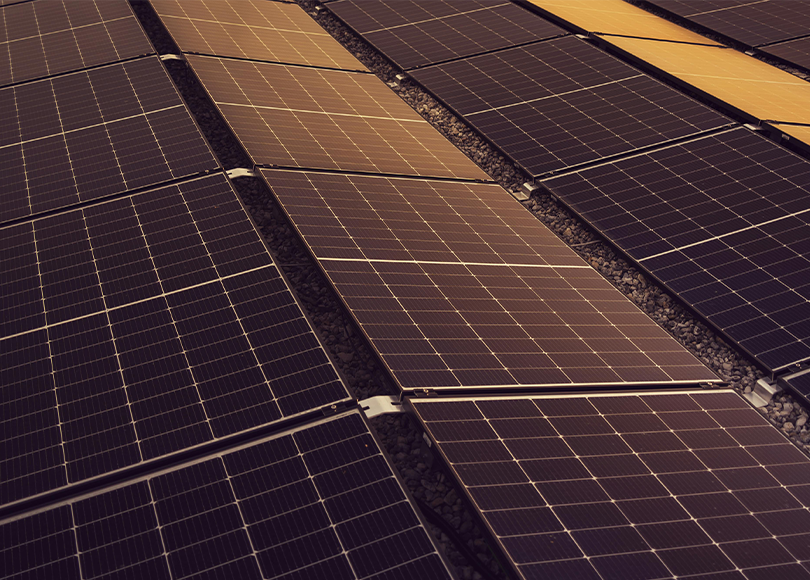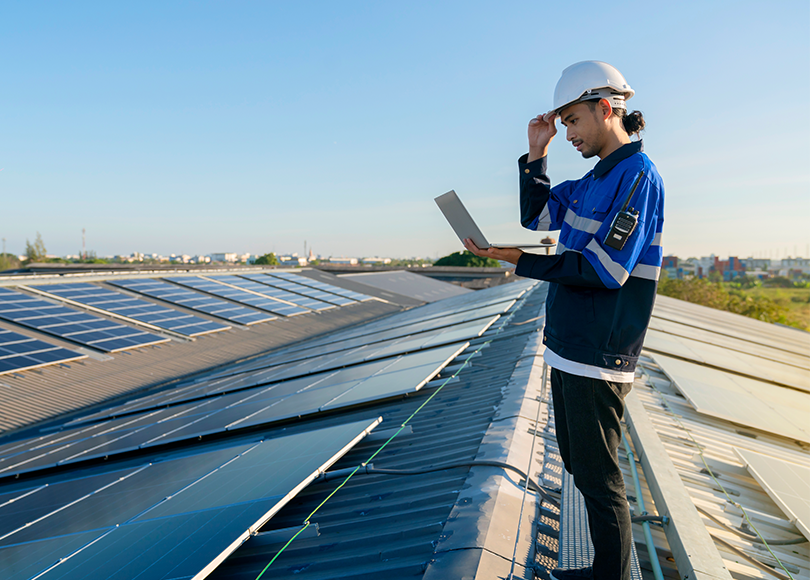
Solar power reduces electricity bills by 60–80% compared to grid power, especially with rising commercial tariffs.

The Indian government offers attractive incentives and accelerated depreciation benefits for solar installations.

Solar systems have long lifespans (20+ years) and require minimal maintenance, providing reliable energy.

Solar panels can be installed on rooftops, parking lots, or unused land, maximizing the use of available space.

Solar power is a clean, renewable energy sources. can drastically reduce the greenhouse gas emissions.
Did you know? 99% of the rooftop spaces of commercial buildings remain unutilised in India. If you also have a large rooftop in your business building, you can use it profitably with a commercial solar system installation.
Commercial solar systems can save up to 75% of your electricity bills. For example, a 250 kW commercial solar system can generate up to 1000 – 1250 units of electricity every day. This solar plant can generate electricity worth Rs. 63,00,000 annually (assuming the tariff is Rs. 15/unit). It’s a huge saving for you, which can give you better profits.


Did you know? 99% of the rooftop spaces of commercial buildings remain unutilised in India. If you also have a large rooftop in your business building, you can use it profitably with a commercial solar system installation.
Commercial solar systems can save up to 75% of your electricity bills. For example, a 250 kW commercial solar system can generate up to 1000 – 1250 units of electricity every day. This solar plant can generate electricity worth Rs. 63,00,000 annually (assuming the tariff is Rs. 15/unit). It’s a huge saving for you, which can give you better profits.


Solar energy reduces electricity bills substantially by using free sunlight to generate power, leading to long-term savings on energy expenses.

Businesses can benefit from various incentives such as investment tax credits, accelerated depreciation, and rebates.

Solar systems typically pay for themselves within 3–7 years, making them financially attractive over their 25-30-year lifespan.

Solar panels have no moving parts and require minimal upkeep, typically just periodic cleaning and inspections, which keeps operational costs low.

Solar energy reduces electricity bills substantially by using free sunlight to generate power, leading to long-term savings on energy expenses.

Businesses can benefit from various incentives such as investment tax credits, accelerated depreciation, and rebates.

Solar systems typically pay for themselves within 3–7 years, making them financially attractive over their 25-30-year lifespan.

Solar panels have no moving parts and require minimal upkeep, typically just periodic cleaning and inspections, which keeps operational costs low.

Factories, warehouses, and industrial facilities typically have large roof spaces and high energy demands, making them prime candidates for solar panel installation.
Many businesses are now recognizing the opportunity to use renewable energy for free by installing both industrial and rooftop solar panels. These companies are reducing energy costs by generating their own on-site power, realizing significant savings.


Factories, warehouses, and industrial facilities typically have large roof spaces and high energy demands, making them prime candidates for solar panel installation.
Many businesses are now recognizing the opportunity to use renewable energy for free by installing both industrial and rooftop solar panels. These companies are reducing energy costs by generating their own on-site power, realizing significant savings.
Major benefits include significant reduction in electricity bills (up to 70%), long-term energy cost savings, lower carbon footprint, and enhanced brand reputation for sustainability.
The cost varies depending on system size, location, and technology, but commercial solar projects generally have a payback period of 3–5 years due to savings on electricity bills and available incentives.
Options include outright purchase, solar loans, leasing, and Power Purchase Agreements (PPAs). Many installers offer flexible financing to reduce upfront costs.
While residential systems get direct subsidies, commercial and industrial projects benefit from tax incentives like accelerated depreciation, excise duty exemptions, and concessional import duty. Central Financial Assistance (CFA) is generally not available for commercial/industrial sectors.
About 10–12 square meters of shadow-free area is required per kWp of solar capacity. The actual space needed depends on the desired system size and site conditions.
Installation timelines vary based on project size and complexity, typically ranging from 1–4 weeks for most commercial projects
Both RCC (concrete) and metallic sheet roofs are suitable. Structural strength and access for maintenance are key considerations. Mounting structures are customized for each roof type
Regular cleaning, periodic inspections, and real-time performance monitoring are essential for optimal system performance. Many providers offer maintenance contracts
Installation is typically planned to minimize disruption. Once operational, solar systems provide reliable power with minimal ongoing intervention, and can enhance energy security for the business